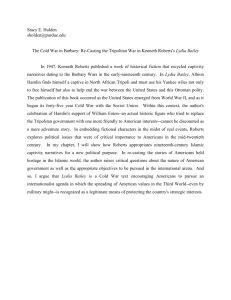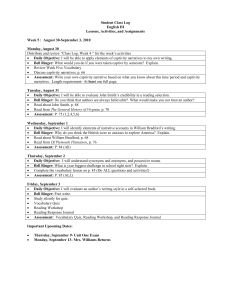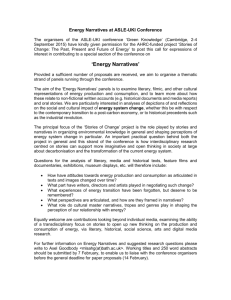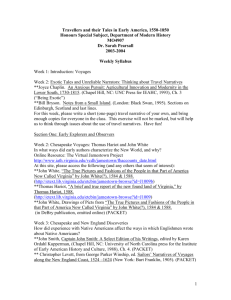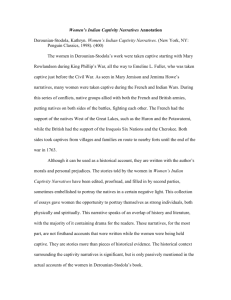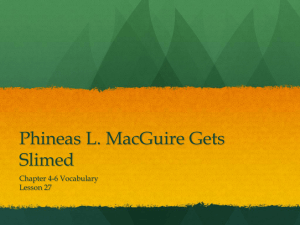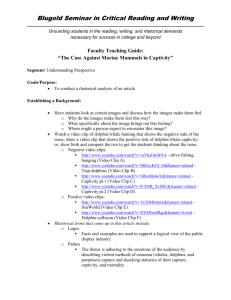Representations of Class in Captivity Narratives
advertisement
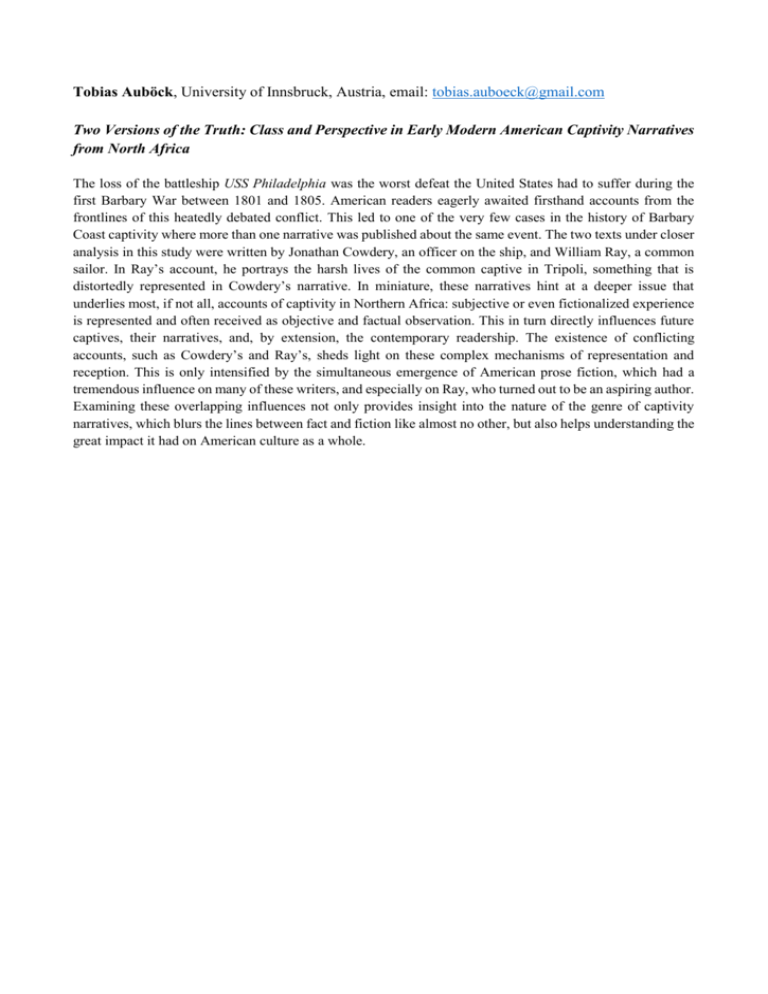
Tobias Auböck, University of Innsbruck, Austria, email: tobias.auboeck@gmail.com Two Versions of the Truth: Class and Perspective in Early Modern American Captivity Narratives from North Africa The loss of the battleship USS Philadelphia was the worst defeat the United States had to suffer during the first Barbary War between 1801 and 1805. American readers eagerly awaited firsthand accounts from the frontlines of this heatedly debated conflict. This led to one of the very few cases in the history of Barbary Coast captivity where more than one narrative was published about the same event. The two texts under closer analysis in this study were written by Jonathan Cowdery, an officer on the ship, and William Ray, a common sailor. In Ray’s account, he portrays the harsh lives of the common captive in Tripoli, something that is distortedly represented in Cowdery’s narrative. In miniature, these narratives hint at a deeper issue that underlies most, if not all, accounts of captivity in Northern Africa: subjective or even fictionalized experience is represented and often received as objective and factual observation. This in turn directly influences future captives, their narratives, and, by extension, the contemporary readership. The existence of conflicting accounts, such as Cowdery’s and Ray’s, sheds light on these complex mechanisms of representation and reception. This is only intensified by the simultaneous emergence of American prose fiction, which had a tremendous influence on many of these writers, and especially on Ray, who turned out to be an aspiring author. Examining these overlapping influences not only provides insight into the nature of the genre of captivity narratives, which blurs the lines between fact and fiction like almost no other, but also helps understanding the great impact it had on American culture as a whole.

